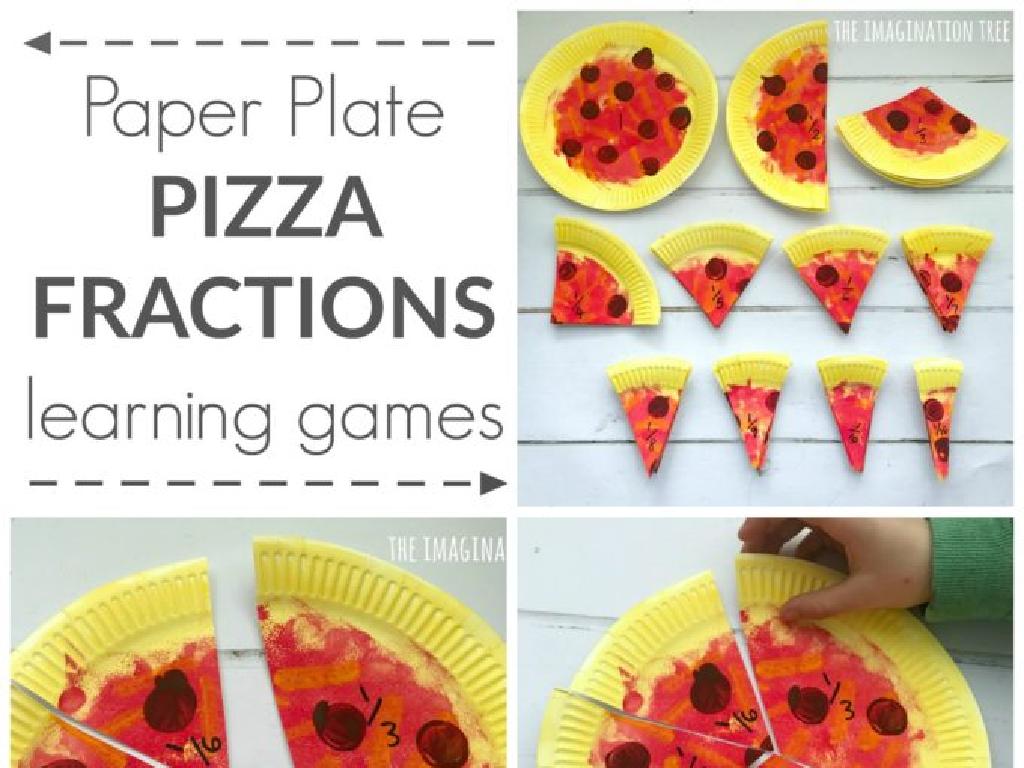Determine The Meaning Of Words Using Antonyms In Context
Subject: Language arts
Grade: Eighth grade
Topic: Context Clues
Please LOG IN to download the presentation. Access is available to registered users only.
View More Content
Using Antonyms in Context Clues
– What are context clues?
– Focus: Antonyms in context
– Opposite words in a sentence that hint at the meaning
– Importance of context in understanding
– Grasping word meanings enhances comprehension
– Practice with examples
– ‘The sun was scorching, unlike the previous frigid days.’
|
This slide introduces the concept of context clues with a specific focus on using antonyms to determine the meaning of unfamiliar words. Context clues are hints found within a sentence or passage that can help decipher the meaning of new or tricky words. Understanding words in context is crucial for reading comprehension, as it allows students to make sense of what they’re reading without stopping to look up every unknown word. By recognizing antonyms, students can infer the meaning of words from their opposites present in the same context. Encourage students to practice this skill by providing examples and guiding them to identify antonyms within those examples. This will help them become more independent readers and improve their vocabulary.
Mastering Antonyms in Context Clues
– Context Clues: A Definition
– Clues authors provide to define tricky words
– Types of Context Clues
– Includes definition, synonyms, antonyms, examples, explanations
– Focus on Antonyms
– Antonyms: Words with opposite meanings that give hints
– Today’s Learning Goal
|
This slide introduces the concept of context clues and focuses on understanding words through their antonyms. Context clues are hints that authors give within the text to help readers define and understand difficult or unusual words without looking them up. There are several types of context clues, including definitions provided in the sentence, synonyms that convey similar meaning, antonyms that express the opposite, examples that illustrate the word, and explanations that describe the word in detail. Today’s goal for the students is to become proficient in using antonyms as context clues. Encourage students to practice by identifying antonyms in sentences and explaining how they help to understand the meaning of the highlighted words. Provide examples where antonyms are used to infer the meaning of words in different contexts.
Using Antonyms to Determine Word Meaning
– Understanding antonyms
– Antonyms are words with opposite meanings.
– Antonyms in context clues
– They act as hints to decipher unfamiliar words.
– Contrast reveals meaning
– Opposite words in a sentence can highlight the meaning of each other.
– Example: ‘arid’ vs ‘lush’
– ‘The arid desert was vast, unlike the lush rainforest.’
|
This slide aims to teach students how to use antonyms as context clues to determine the meaning of unfamiliar words. Antonyms provide a clear contrast in meaning that can be very helpful for understanding. For example, in the sentence provided, ‘arid’ suggests a lack of lushness or moisture, especially when contrasted with ‘lush,’ which implies rich vegetation and wetness. Encourage students to look for words that indicate contrast, such as ‘unlike’ or ‘opposite,’ and to use these cues to infer meaning. Have them practice with additional sentences where they identify antonyms and use them to define challenging words.
Using Antonyms to Determine Word Meaning
– Spot signal words indicating contrast
– Words like ‘however’, ‘but’, ‘yet’ often signal antonyms
– Practice finding antonyms in sentences
– Understand antonyms through examples
– Example: ‘The sun was blazing, yet the wind felt icy.’ – ‘blazing’ contrasts with ‘icy’
– ‘boisterous’ vs. ‘tepid’
– ‘boisterous’ implies loud or energetic, opposite of ‘tepid’ meaning lukewarm or unenthusiastic
|
This slide aims to teach students how to use antonyms as context clues to determine the meaning of unfamiliar words. Antonyms are words with opposite meanings and can provide significant insight into the meaning of the word in question. Signal words such as ‘unlike’, ‘however’, ‘but’, ‘yet’, and ‘on the other hand’ often precede antonyms and can alert readers to pay attention. Through practice, students will learn to identify these signal words and use them to find antonyms within sentences, which will help them infer the meaning of new vocabulary. The example provided illustrates how contrasting words can clarify meaning, and students should be encouraged to find and discuss additional examples.
Practice with Antonyms in Context
– Read the paragraph as a class
– Spot antonyms used for clues
– Antonyms are words with opposite meanings
– Discuss meanings of key words
– How do antonyms help guess the word?
– Reflect on the context’s role
– Understanding how context alters word meaning
|
This slide is aimed at engaging students in a practical exercise to determine the meaning of words using antonyms in context. Start by reading a selected paragraph with the class, ensuring that everyone understands the general content. Then, guide the students to identify antonyms present in the paragraph that serve as context clues for understanding the highlighted words. Facilitate a discussion on each highlighted word, asking students to explain how the antonym provides insight into the word’s meaning. Encourage them to consider how the context might change the meaning of the word in different scenarios. This activity will help students to actively use context clues to enhance their vocabulary and reading comprehension skills.
Group Activity: Antonym Hunt
– Break into small groups
– Each group gets a story
– Find antonyms in the text
– Look for words with opposite meanings to the unknown words
– Infer meanings of new words
– Use the antonyms to guess what the unknown words could mean
|
This group activity is designed to enhance students’ vocabulary skills by using context clues, specifically antonyms, to determine the meaning of unfamiliar words. Divide the class into small groups and distribute a short story to each, ensuring that the text contains several challenging words. Instruct the students to collaboratively search for antonyms within the story that relate to the unknown words. These antonyms will serve as context clues to help them infer the meanings of the words they do not know. Encourage each group to discuss their findings and write down their inferred definitions. As a teacher, prepare to guide the groups, offering hints if they are struggling to find antonyms or understand the context. After the activity, bring the class together for a discussion to compare their inferences and provide the correct definitions.
Share and Reflect: Antonyms in Context
– Groups present their findings
– Discuss varied word interpretations
– Reflect on antonyms as clues
– How did antonyms help determine meaning?
– Understand diverse perspectives
– Appreciate how context influences understanding
|
This slide is meant to facilitate a classroom discussion where students will share the results of their group work on using antonyms to determine the meaning of words. Each group will present the words they explored, the antonyms they identified, and how these helped them understand the word’s meaning. The class will then discuss how different groups may have interpreted the meanings differently, highlighting the importance of context. The reflection part will focus on the process of using antonyms as context clues and encourage students to think critically about how context can change the meaning of words. The teacher should guide the discussion, ensuring that each group has time to share and that all students participate in the reflection. The goal is to deepen students’ understanding of how to use antonyms as a tool for vocabulary development.
Class Activity: Crafting Sentences with Antonyms
– Write sentences with new vocab
– Use an antonym for context
– Antonyms are words with opposite meanings
– Exchange sentences with a partner
– Guess meanings of new words
– Use your partner’s clues to infer the word meanings
|
This activity is designed to enhance students’ understanding of vocabulary through the use of antonyms. Each student will write original sentences that include a new vocabulary word and an antonym to provide context. After writing, students will pair up to exchange their sentences and work together to guess the meanings of the new words. This peer interaction encourages collaborative learning and critical thinking. As a teacher, facilitate the activity by providing a list of new vocabulary words and examples of antonyms. Monitor the pairs to ensure they are on task and assist with any difficulties in understanding the words or concepts. Possible activities for different students could include creating sentences with varying complexity, using the words in a short story, or drawing illustrations to represent the antonym pairs.
Conclusion: Antonyms in Context & Homework
– Recap: Antonyms aid comprehension
– Homework: Find an article
– Choose any interesting article
– Identify and infer meanings
– Use antonyms for unfamiliar words
– Share findings in next class
– Be ready to discuss your discoveries
|
This slide wraps up the lesson by emphasizing the value of antonyms in understanding the meanings of words within a given context. For homework, students are tasked with finding an article of their choice and identifying words that are unfamiliar to them. They should then use antonyms, which are words with opposite meanings, to infer the meanings of these unfamiliar words. This exercise will help reinforce their understanding of how context clues work and prepare them for a discussion in the next class. Encourage students to select articles on topics they’re interested in to make the activity more engaging. Provide examples of how antonyms can give clues to a word’s meaning, and remind them to consider the overall context of the sentence or paragraph where the word appears.






